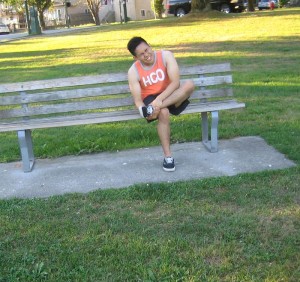Trench foot is a serious condition that arises if the feet has been wet for extended periods. Despite the increased awareness in keeping the feet dry, it is still possible to develop the condition if the feet are exposed to cold and wet conditions for extended periods.
Due to continued cold and dampness, the feet might end up with diminished circulation and nerve function. They are also denied of oxygen and essential nutrients that the blood normally supplies. Oftentimes, the reduced nerve function can make other signs such as pain less obvious.
If left untreated, it can result to complications such as severe blisters, gangrene, ulcers, nerve damage and amputations.
What are the indications?

If diagnosed with trench foot, there are some evident changes such as:
- Blotchy skin
- Blisters
- Redness
- Skin tissue that dies and falls off
In addition, the condition can trigger various sensations in the feet such as numbness, coldness, heaviness, tingling, continuous itchiness and even pain if exposed to heat.
The symptoms might only involve a section of the feet. In severe cases, it can spread throughout the entire feet, including the toes.
Management of trench foot
Trench foot is managed with adequate rest and elevation of the foot to promote circulation. This can help prevent the formation of new blisters and wounds. Pain medications such as ibuprofen can also lessen the swelling and pain.
The initial signs of trench foot can also be managed with home remedies. Some of the same techniques for frostbite can be used such as:
- Removing soiled socks
- Avoid using dirty socks to bed
- The feet must be thoroughly dried
- Clean the affected site as soon as possible
- Apply a heat pack on the site for up to 5 minutes
In case the symptoms of trench foot do not seem to improve after home remedies, a doctor must be consulted to prevent any complications from developing.
What is the outlook?
If detected early, trench foot can be managed without causing any complications. An ideal way to avoid the symptoms and potential health risks is to prevent it altogether.
Make sure that the individual has extra socks and shoes, especially if outdoors for a long time. In addition, air dry the feet after using socks and shoes, even if they are not wet.
